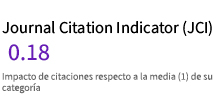Cinema and multilingualism in the subtitled abbey of Jean-Jacques Annaud
DOI:
https://doi.org/10.24310/Fotocinema.2019.v0i18.5513Keywords:
Cinema, Multilingualism, Dubbing, Subtitling, Translation, Audiovisual.Abstract
In this text, some basic concepts of audiovisual translation are reviewed, especially in relation to dubbing and subtitling. On the other hand, reference is made to multilingual cinema, in whose stories coexist different languages. When this is internationally exhibited, the content of this kind of cinematography isn't usually dubbed in its entirety, applying the translation, generally, on the main language of the film. The reasons are often diverse, especially in relation to the kind of story that is shown to the audience, and that may alter the essence of the film. Likewise, the film The name of the rose (Der name der rose, Jean-Jacques Annaud, 1986) is introduced as a brief case study in this paper, whose multilingualism defines its verisimilitude, historical contextualization and narratology.
Downloads
Metrics
Publication Facts
Reviewer profiles N/A
Author statements
Indexed in
-
—
- Academic society
- N/A
- Publisher
- Universidad de Málaga
References
Agost, R. (2007). La traducción de la publicidad televisiva: la globalización, catalizadora de cambios en la estrategia traductora. Linguistica Antverpiensia, New Series - Themes in Translation Studies, 6, 295-314. Recuperado de https://bit.ly/2EQPZ5k
Bordwell, D. & Thompson, K. (2003). El arte cinematográfico. Barcelona: Paidós.
Botella, C. (2007). Aproximación al estudio del doblaje y la subtitulación desde la perspectiva prescriptivista y la descriptivista: la traducción audiovisual. Tonos digital: Revista electrónica de estudios filológicos, 13. Recuperado de https://bit.ly/2iVOx4r
Brinton, L. J. & Closs, E. (2005). Lexicalization and Language Change. Cambridge, Reino Unido: Cambridge University Press.
Brychová, A. (2017). Multilingualism as a Chance - A Set of Conferences About the Promotion of Multilingualism. Orbis Scholae, 11(3), 123-125. Recuperado de https://bit.ly/2ESRTlM
Carriles, T. (2016). Dificultades de traducción de las películas multilingües. El caso de La terminal (Trabajo final de grado). Madrid: Universidad Pontificia de Comillas. Recuperado de https://bit.ly/2RjvW59
Chaume, F. (2014). Cine y traducción. Madrid: Cátedra.
Coker, L. (2016). Tolkien's Linguistics: The artificial languages of Quenya and Sindarin. The National Conference on Undergraduate Research (NCUR). University of North Carolina, Asheville, pp. 1242-1249. Recuperado de https://bit.ly/2rSprrF
Corrius, M. & Zabalbeascoa, P. (2011). Language variation in source texts and their translations. The case of L3 in film translation. Target - International Journal of Translation Studies, 23(1), 113–130. DOI: 10.1075/target.23.1.07zab
Cuéllar, C. (2018). Los dominicos y el cine: el subtitulado de películas multilingües. En Bueno, A. (Dir.). Los dominicos españoles e iberoamericanos y la traducción (Traducción intersemiótica y artística), 3, 1131-1144. Granada: Editorial Comares. Recuperado de https://bit.ly/2rVdLV8
Díaz-Cintas, J. (2015). Multilingüismo, traducción audiovisual y estereotipos: el caso de Vicky Cristina Barcelona. Prosopopeya. Revista de crítica contemporánea: Traducción, ideología y poder en la ficción audiovisual, 9, 135-161. Recuperado de https://bit.ly/2T9zaW7
Eco, U. (1980). Il nome della rosa. Milán: Bompiani.
Eco, U. (1984). Postille A Il Nome Della Rosa. Milán: Bompiani.
Eco, U. (2003). Dire quasi la stessa cosa. Esperienze di traduzione. Milán: Bompiani.
García, F. (2002). Adaptación cinematográfica y traducción intersemiótica. Estudio de El nombre de la rosa a partir de las versiones italiana, francesa, inglesa y española (Tesis doctoral). Málaga: Universidad de Málaga. Recuperado de https://bit.ly/2yvlEo4
Jäckel, A. (2001). Shooting in English? Myth or necessity? En Gambier, Y. & Gottlieb, H. (Eds). (Multi)Media Translation: Concepts, Practices, and Research. Ámsterdam: John Benjamins, 73-75.
Martí, J. L. (2010). Cine independiente y traducción. Valencia: Tirant Lo Blanch.
Martin, M. (2002). El lenguaje del cine [1955, 5ª ed.]. Barcelona: Gedisa.
Martínez, N. (2008). La subtitulación de una película multilingüe: Ladies in Lavender. Barcelona: Universidad Pompeu Fabra. Recuperado de https://bit.ly/2EOwJ7I
Mendoza, M. (2015). El doblaje y el español neutro en las películas de animación de Disney (Trabajo final de grado). Barcelona: Universidad de Vic??. Recuperado de https://bit.ly/2GG0rOH
Richart, M. (2008). Algunas reflexiones en torno a la traducción audiovisual. En Actas del II Congreso Internacional de Lengua, Literatura y Cultura de E/LE: Teoría y práctica docente. Onda: JMC, 295-310. Recuperado de https://bit.ly/2CE2YFp
Downloads
Published
How to Cite
Issue
Section
License
All contents published in Fotocinema Revista científica de cine y fotografía are protected under the Creative Commons Attribution-NonCommercial-ShareAlike 4.0 International (CC BY-NC-SA 4.0) license. All about this license is available in the following link: <http://creativecommons.org/licenses/by-nc-sa/4.0>
Users can copy, use, redistribute, share and exhibit publicly as long as:
- The original source and authorship of the material are cited (Journal, Publisher and URL of the work).
- It is not used for comercial purposes.
- The existence of the license and its especifications are mentioned.
There are two sets of authors’ rights: moral and property rights. Moral rights are perpetual prerogatives, unrenounceable, not-transferable, unalienable, imprescriptible and inembargable. According to authors’ rights legislation, Fotocinema. Revista científica de cine y fotografía recognizes and respects authors moral rights, as well as the ownership of property rights, which will be transferred to University of Malaga in open access. The property rights are referred to the benefits that are gained by the use or the dissemination of works. Fotocinema. Revista científica de cine y fotografía is published in an open access form and it is exclusively licenced by any means for doing or authorising distribution, dissemination, reproduction, , adaptation, translation or arrangement of works.
Authors are responsable for obtaining the necessary permission to use copyrighted images.














13.png)



